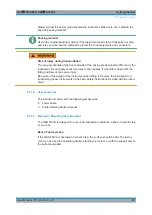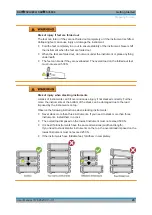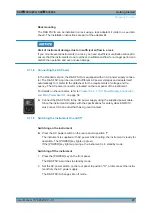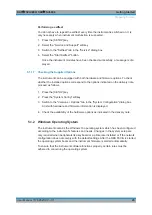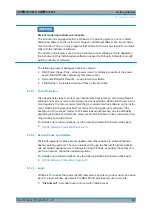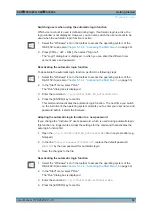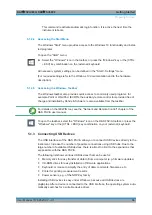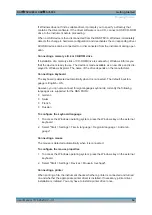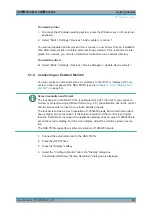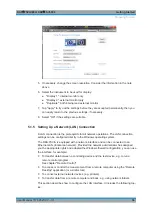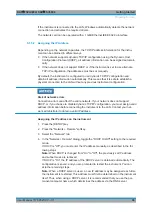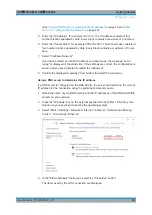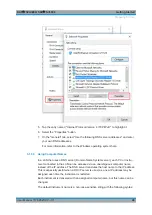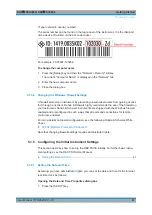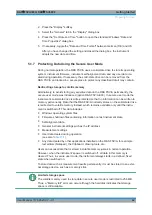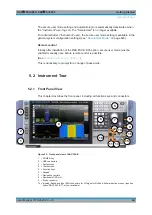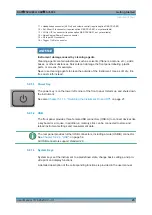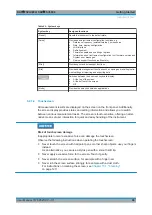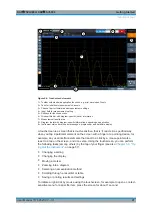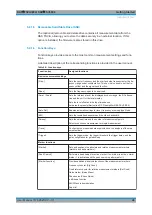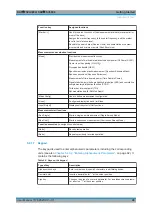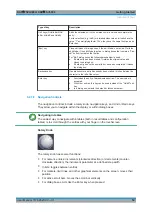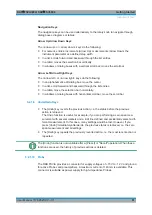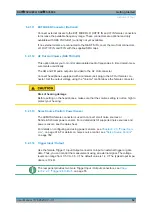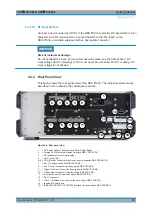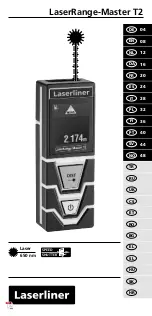
Getting Started
R&S
®
FSVA3000/ R&S
®
FSV3000
38
User Manual 1178.8520.02 ─ 01
If the instrument is connected to the LAN, Windows automatically detects the network
connection and activates the required drivers.
The network card can be operated with a 1 GBit Ethernet IEEE 802.3u interface.
5.1.5.2
Assigning the IP Address
Depending on the network capacities, the TCP/IP address information for the instru-
ment can be obtained in different ways.
●
If the network supports dynamic TCP/IP configuration using the Dynamic Host
Configuration Protocol (DHCP), all address information can be assigned automati-
cally.
●
If the network does not support DHCP, or if the instrument is set to use alternate
TCP/IP configuration, the addresses must be set manually.
By default, the instrument is configured to use dynamic TCP/IP configuration and
obtain all address information automatically. This means that it is safe to establish a
physical connection to the LAN without any previous instrument configuration.
Risk of network errors
Connection errors can affect the entire network. If your network does not support
DHCP, or if you choose to disable dynamic TCP/IP configuration, you must assign valid
address information before connecting the instrument to the LAN. Contact your net-
work administrator to obtain a valid IP address.
Assigning the IP address on the instrument
1. Press the [SETUP] key.
2. Press the "N Remote" softkey.
3. Select the "Network" tab.
4. In the "N Remote" dialog, toggle the "DHCP On/Off" setting to the required
mode.
If DHCP is "Off", you must enter the IP address manually, as described in the fol-
lowing steps.
Note:
When DHCP is changed from "On" to "Off", the previously set IP address
and subnet mask are retrieved.
If DHCP is "On", the IP address of the DHCP server is obtained automatically. The
configuration is saved, and you are prompted to restart the instrument. You can
skip the remaining steps.
Note:
When a DHCP server is used, a new IP address may be assigned each time
the instrument is restarted. This address must first be determined on the instrument
itself. Thus, when using a DHCP server, it is recommended that you use the per-
manent computer name, which determines the address via the DNS server
Preparing for Use


